IoT Operating Systems
Last Updated :
07 Mar, 2024
An Operating System is a software program software that manages and controls all the resources in a computer, together with the hardware and the software program. A running system is chargeable for controlling, dealing with, and coordinating all the sports and resources in a computer. An operating machine acts as a middleman between the user of the PC and the laptop hardware.
The primary motive of a running device is to permit packages (the software) to communicate with the laptop hardware, and to manipulate the system hardware and the software program sources.
What is IoT Operating Systems?
In today’s connected world, IoT (Internet of Things) has become a game-changer. It’s transforming various industries. IoT refers to a vast network of connected devices and sensors that share, process, and analyze data to enable smooth communication and automation.
An IoT operating system (OS) allows us to communicate with cloud services across a global network within tight constraints of memory bandwidth, data volume, and processing power. IoT OS enables devices and applications to communicate with each other and with other systems, including cloud platforms and services
Evolution of IoT Operating System
- IoT operating system development has passed through many different stages, adapting to changes in the unique requirements of IoT applications and connected devices Initially, early IoT devices relied on embedded systems, and often operated on proprietary operating systems designed for specific hardware requirements
- As IoT solutions evolved and became more sophisticated, existing operating systems such as Linux and Windows Embedded were re-established for IoT applications, providing familiar but sporadic development environments lacking infrastructure efficiency significant changes occurred with the advent of smaller operating systems explicitly designed for IoT such as FreeRTOS, TinyOS and Contiki It happened.
- This system provided efficient resource management, provided real-time capabilities, and supported communication systems, managing IoT devices with components As security concerns grew communication became more important than any, despite a combination of robust security features and easy connectivity to cloud services.
- The emergence of skills and edge computing capabilities for industry verticals reflected the latest trends, enabling IoT solutions to meet industry-specific needs and leverage edge computing for improved productivity and productivity Overall, IoT the development of business processes Demonstrate an ongoing desire to meet needs
How do as IoT Operating Systems Work?
- IoT operating systems (OS) function as the essential software program layer that arranges the capability of IoT gadgets. At their center, these structures abstract the complexities of the underlying hardware, offering a standardized interface for gaining access to additives like sensors, conversation modules, and peripherals.
- By coping with limited sources consisting of processing electricity, reminiscence, and electricity consumption, IoT OSs make certain efficient usage at the same time as optimizing the device’s overall performance and responsiveness.
- Communication lies at the heart of IoT operations, and IoT running systems facilitate seamless interaction among devices and networks.
- They come ready with assistance for a diverse array of communique protocols, which includes Wi-Fi, Bluetooth, Zigbee, LoRaWAN, MQTT, and more. This interoperability enables IoT devices to trade statistics with one another, area servers, and cloud systems, forming interconnected ecosystems that energy numerous IoT applications.
- In environments in which timing is important, IoT operating systems put in force actual-time abilities to meet stringent necessities. Through advanced scheduling algorithms and deterministic conduct, these structures ensure the timely execution of critical tasks along with sensor facts acquisition and manipulation sign processing.
- This actual-time responsiveness is critical for packages like business automation, healthcare monitoring, and smart infrastructure control.
- Security is a paramount difficulty in the IoT panorama, given the capability results of breaches and vulnerabilities. IoT operating structures combine sturdy safety features inclusive of encryption, authentication, steady boot, and over-the-air updates to safeguard gadgets, information, and communication channels.
- These measures shield opposition from unauthorized entry, tampering, and exploitation.
Need for IoT Operating Systems
- IoT (Internet of Things) OS are critical for ensuring seamless connectivity and verbal exchange of IoT gadgets. Traditional Operating Systems, such as Windows or IOS have been not designed for the unique needs and skills of IoT gadgets.
- So, These Traditional Operating Systems regularly lack the necessary assistance for low energy intake, restrained memory, and efficient records processing that IoT gadgets require.
- Using a Separate working device specifically designed for IoT devices allows for optimum performance and optimization. It enables easy integration and conversation among numerous kinds of IoT devices, developing an extra seamless and connected revel for customers. It additionally permits IoT gadgets to function efficiently with limited resources, which includes low strength and reminiscence.
- The Physical size of IoT devices is becoming increasingly smaller even are required to be wearable. These physical parameters put significant constraints on the hardware and hence on the software.
- The Internet of Things makes everyday devices “smarter” by enabling them to send data over the internet and communicate with people and other IOT-enabled devices.
Features of IOT Operating System
An IOT comes up with the following Features:
1. Connectivity
When it comes to IoT, connectivity is the most important factor to consider. Without proper communication between the various components of the IoT ecosystem (e.g. sensors, compute engine, data hub, etc.), no proper business use cases can be executed. IoT devices are connected via radio waves, Bluetooth, and wifi. We can use various protocols of internet connectivity layers to optimize efficiency and general connectivity across IoT ecosystems and Industries.
2. Scale
Designing IoT devices with easy scalability, both up and down, on-demand is essential. IoT is utilized across a wide range of applications, ranging from smart home automation to the automation of large factories and workstations.
3. Intelligence
In almost every IOT use case in today’s world, the data is used to make important business insights and drive important business decisions. We develop machine learning/deep learning models on top of this massive data to obtain valuable insights.
4. Real-time processing requirements
IoT apps process data on the go. If the OS cannot support it, the purpose is lost, and the application will not function the way it is supposed to.
5. Advanced Security
One of the biggest concerns, perhaps, in IoT is data security. It is the responsibility of the operating system to ensure the information being transmitted stays protected at all times and across all devices. Here is what the next section is all about. For more Features.
Best IOT Operating Systems

Best IOT Operating Systems
1. Ubuntu Core OS
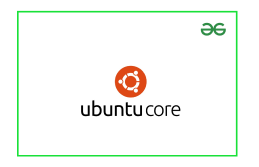
Ubuntu Core IOT Operating System
- There is no doubt that this is one of the most secure, robust, and lightweight distributions of Linux. It provides you with a low-level framework of the Linux Kernel along with a host of preinstalled tools that are incredible to use.
- The OS runs comfortably on the Unity Desktop environment, allowing it to perform efficiently on mobile devices or computers without any modifications.
- It has security features such as full-disk encryption, a cryptographically authenticated boot procedure, and manual and remote recovery modes. It may be used to create secured embedded Linux for IOT devices.
2. Contitki OS
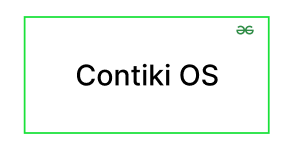
Contiki IOT Operating System
- Contiki is a free open-source operating system for IOT that particularly targets small IOT devices with limited memory, power, bandwidth, and processing power. One of the biggest concerns, perhaps, in IOT is data security.
- It is popular as an IOT OS suitable for low-powered internet connectivity, it runs effectively with internet protocols such as IPV4, and IPV6.
- Contiki has multitasking capability coupled with a built-in internet protocols suite to support wireless standard CoAP and RPL.
- In Contiki OS, there is one problem it doesn’t facilitate the deployment of real-time applications, so no real-time process scheduling algorithms are included in this operating system.
3. RIOT OS

RIOT IOT Operating System
- RIOT (Real-Time Operating System) is also a free open-source IOT Operating System developed by a worldwide grassroots community of companies, academics, and hobbyists.
- RIOT is a low-power operating system based on microkernel architecture and the C and C++ programming languages.
- It is less dependent on hardware code and maintains energy efficiency.
- RIOT is the only operating system that has a large community across multiple channels such as Twitter, Discourse, YouTubewireless devices, and device devicesGithub.
4. Tiny OS
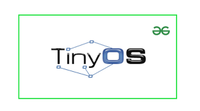
Tiny IOT Operating System
- Tiny is an embedded, component–based operating system and platform for low–power wireless device devices –devices, such as those used in wireless sensor networks (WSNs).
- It provides excellent support for networking and consumes low power for IOT operations.
- TinyOS supports network technologies such as WAP, AP, BRI,, and software–defined networking(SD-WAN), and software-based mobile networks.
- It embedded the BLE library for the Bluetooth 4.2 wireless radio technology.
5. Tizen OS
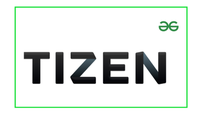
Tizen IOT Operating System
- Tizen is Linux based free operating system for mobile and connected devices, and it comes in versions for vehicles, smartphones, tablets, and Wearable devices.
- The Tizen offers a fast and secure user interface to allows applications to be developed that run directly on the top of the hardware without requiring any modifications or installation of custom ROMs.
- Tizen is an open and flexible OS built to address the needs of the connected device ecosystem. It provides exceptional operations speed as compared to other platforms.
- Samsung has been projecting Tizen OS as UNIVERSAL OPERATING SYSTEM.
6. Android Things OS

Android Things IOT Operating System
- Android Things is an operating system developed by Google for IoT and embedded devices.
- Android Things is a managed operating system, developed for IoT devices like smart locks, smart thermostats, and more. It supports multitasking and virtual memory.
- It could also run on products like connected speakers, security cameras, routers, and so on. The idea is that with Android things it would be easier for companies to start shipping IoT hardware because they are using the same Android developer tools that they already know.
- Android Things therefore target different IoT segments as compared to microcontroller-based IOT devices.
7. LibreELEC OS
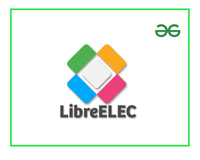
Libre ELEC IOT Operating System
- This Operating System was started as an open-source project to help users build a more effortless, more enjoyable experience with their Kodi(XBMC) media central system.
- LibreELEC is free to use and provides an easy interface that allows you to navigate through settings in a few clicks.
- It offers content from sources such as YouTube, Twitter, Netflix, Sky Box, Dropbox, Hungama, drive, and Drop Box Google Drive.
- It offers plenty of settings and ways for users to get the most out of their hard driveLinux space.
8. Linux OS
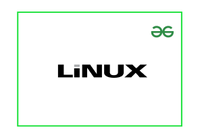
Embedded Linux IOT Operating System
- Linux slightly modified is an Embedded Linux build for embedded devices and it is a slightly modified version of the Linux Kernel. The smaller size and power of Embedded Linux facilitates the integration of all requirements of IoT devices, so you will find that it is useful for navigation devices such as wireless routers.
- The OS takes up a mere 100kb of memory space, making it quick and dynamic, and it also offers an unparalleled level of configuration in the IoT OS sense.
- It is another free open-source OS that enjoys the support of a large community.
Advantages of IoT Operating System
- Resource efficiency: The IoT operating system is designed to be simple and efficient, providing resources such as memory, processing power, energy consumption, etc. This for IoT devices can perform well within their hardware limits.
- Scalability and flexibility: IoT operating systems are designed to be modular and scalable, supporting different devices, applications, and use cases Developers are given flexibility to choose hardware platforms, programming languages , and development tools, thus accelerating IoT solutions prototyping, and enabling deployment has been activated.
- Real-time capabilities: Many IoT operating systems provide real-time scheduling and deterministic behavior, providing timely responses to events and ensuring critical tasks are executed in real-time This is important for latency-intensive applications with low and high reliability, such as industrial automation and control systems.
- Connectivity support: IoT operating systems provide built-in support for a wide range of networking systems and communication technologies, enabling seamless interaction with networks and devices This facilitates the exchange of performance and data between IoT devices and backend systems . . . .
- Security Features: IoT operating systems incorporate security features such as encryption, authentication, secure boot, and over-the-air (OTA) updates to protect devices, data, and communication channels from unauthorized access, tampering, and functionality so the overall security level is increased using IoT.
- Easy development: Many IoT service providers provide development frameworks, software libraries, and tools that streamline the development process and accelerate time to market for IoT service offerings
Disadvantages of IoT Operating System
- Limited Hardware Compatibility: IoT operating structures may additionally have confined guides for specific hardware platforms, peripherals, and sensors, that may constrain tool selection and customization alternatives. This may require builders to apply specific hardware additives that might be well-matched with the selected operating system.
- Complexity and Learning Curve: Some IoT working systems may have a steep learning curve, particularly for builders who are unfamiliar with embedded systems programming, real-time computing, and coffee-level hardware interactions. This can pose demanding situations for green developers and require additional education and knowledge.
- Fragmentation and Compatibility Issues: The variety of IoT running systems and platforms can lead to fragmentation and compatibility issues, in particular, while integrating IoT devices with present infrastructure, protocols, and requirements. Interoperability challenges can also arise because of variations in communication protocols, records formats, and software interfaces.
- Security Vulnerabilities: Despite incorporating protection capabilities, IoT running systems may additionally nonetheless be liable to security vulnerabilities and exploits, in particular, if now not frequently updated or patched. The proliferation of IoT devices and the complexity of IoT ecosystems can create opportunities for attackers to make the most of weaknesses in software, firmware, and network configurations.
- Performance Overhead: Certain safety and reliability capabilities carried out in IoT operating systems may additionally impose overall performance overhead, impacting machine responsiveness, throughput, and power performance. Developers need to cautiously balance protection necessities with overall performance considerations to ensure certain most suitable device operation.
Conclusion
- IoT Technology is providing innovative solutions that impact virtually all aspects of modern life. IoT devices are deployed in advanced systems that collect data and perform real-time analytics that contribute to smart cities and efficient industrial automation.
- Choosing the right operating system for an IoT Implementation needs to consider several factors. The majority of IoT devices operate with constrained resources, requiring a lightweight operating system that delivers the necessary functionality. In some cases, an operating system may be selected for reasons such as its user interface and connectivity.
- The operating system used for an IoT system should be selected carefully with input from developers who will be responsible for maintaining the IoT environment. Their familiarity with the language used to construct an open-source operating system enables modifications that enhance the efficiency and productivity of the resulting system.
Frequently Asked Questions on IoT Operating Systems – FAQs
Why do we need IoT operating systems?
IoT operating systems are optimized for the unique requirements of IoT devices, including limited resources, real-time processing, connectivity, and security. They provide a basis for constructing reliable, green, and scalable IoT solutions.
What are the important thing capabilities of IoT working systems?
Key functions of IoT working structures consist of low useful resource footprint, real-time capabilities, connectivity help for diverse protocols, security features, strength performance, modularity, and scalability.
What are some examples of IoT operating systems?
- FreeRTOS
- Mbed OS
- MicroPython
- Embedded Linux
How do IoT operating systems handle connectivity?
It is well-known as an IOT Operating System that works well with IPV4 and IPV6, making it appropriate for low-power internet connectivity.
Share your thoughts in the comments
Please Login to comment...